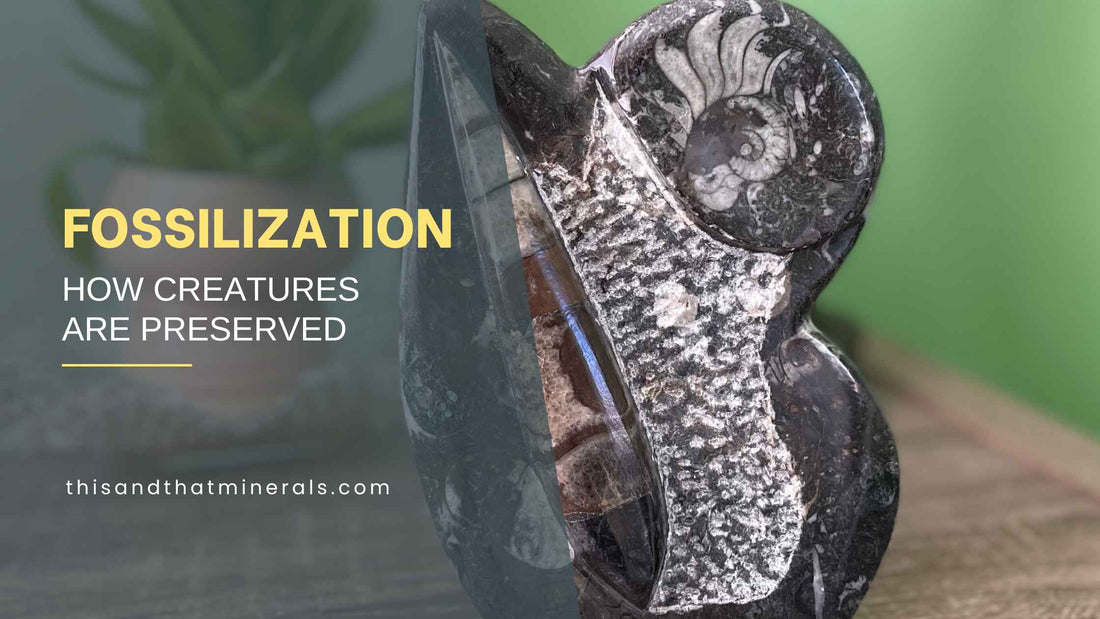
Fossilization: How Creatures Are Preserved
Fossils provide a glimpse into Earth's prehistoric past, offering invaluable insights into ancient ecosystems, evolution, and climate changes. However, not all organisms are fortunate enough to become fossils. The process of fossilization is rare and requires specific conditions to preserve remains for millions of years.
Types of Fossilization
Fossilization occurs in several ways, each resulting in different types of fossils. Here are the most common methods:
1. Petrification (Permineralization)
Permineralization is one of the most well-known forms of fossilization, which occurs when minerals gradually replace organic material. Over time, groundwater-rich minerals seep into buried bones, wood, or shells, depositing silica or calcium carbonate minerals. This process creates stone-like replicas of the original organism while preserving intricate details.
2. Amber Fossilization
Some of the most stunning fossils are found in amber, the hardened resin of ancient trees. Small creatures like insects, spiders, and even tiny lizards can become trapped in sticky tree sap, which ultimately fossilizes into amber. This form of fossilization preserves soft tissues, offering rare insights into ancient species and capturing behavioral snapshots of prehistoric life.
3. Carbonization (Compression Fossils)
When organisms are buried under layers of sediment, heat and pressure drive off volatile elements, leaving behind a thin, carbon-rich residue. This process is common in fossilized leaves, fish, and soft-bodied organisms, preserving fine details as dark imprints on rock surfaces.
4. Molds and Casts
If an organism buried in sediment dissolves over time, it can leave behind a hollow impression known as a mold. If minerals later fill this mold, a cast fossil forms, creating a three-dimensional representation of the original organism.
5. Freezing and Desiccation
In rare cases, entire organisms can be preserved through freezing (such as Ice Age mammoths in permafrost) or desiccation (drying out in arid environments). These exceptional fossils retain soft tissues, fur, and stomach contents, providing unparalleled information about extinct species.
Why Some Animals Fossilize While Others Don’t
Fossilization is an uncommon event, and several factors determine whether an organism is preserved:
Hard Parts vs. Soft Bodies
Organisms with hard shells, bones, or teeth have a higher chance of fossilization than those with soft bodies. This is why mollusks, dinosaurs, and trilobites fossils are more common than those of jellyfish or worms.
Rapid Burial
For fossilization, remains must be quickly buried by sediment to protect them from scavengers, decay, and weathering. Environments like river deltas, ocean floors, and volcanic ash beds offer ideal conditions for preservation.
Chemical Environment
The presence of minerals in groundwater plays a crucial role. In some environments, acidic water dissolves bones and shells before fossilization can occur, while in others, rich mineral deposits facilitate preservation.
Environmental Stability
Fossils form best in stable conditions with minimal disturbances. Tectonic activity, erosion, or other geological changes can destroy fossils before they are discovered.
What Fossils Tell Us About Past Environments
Fossils are more than just remnants of ancient life—they are powerful tools for reconstructing Earth’s history.
Climate and Ecosystems
Fossilized plants and animals reveal past climates and ecosystems. For example, coral fossils indicate warm, shallow seas, while the presence of fern fossils suggests a humid, tropical environment.
Evolutionary History
By comparing fossils from different time periods, scientists can trace evolutionary changes. Transitional fossils, such as Archaeopteryx (which links dinosaurs and birds), provide key evidence of how species evolved over millions of years.
Mass Extinctions and Biodiversity
Fossils record major extinction events, such as the disappearance of the dinosaurs 66 million years ago. These events help scientists understand how life on Earth responds to catastrophic changes.
Conclusion
Fossilization is a rare and remarkable process that allows us to study the distant past. Different types of fossilization preserve organisms in unique ways, offering clues about ancient environments, evolution, and the history of life on Earth. While not every creature becomes a fossil, those that do provide a fascinating glimpse into worlds long gone.
PIN IT



